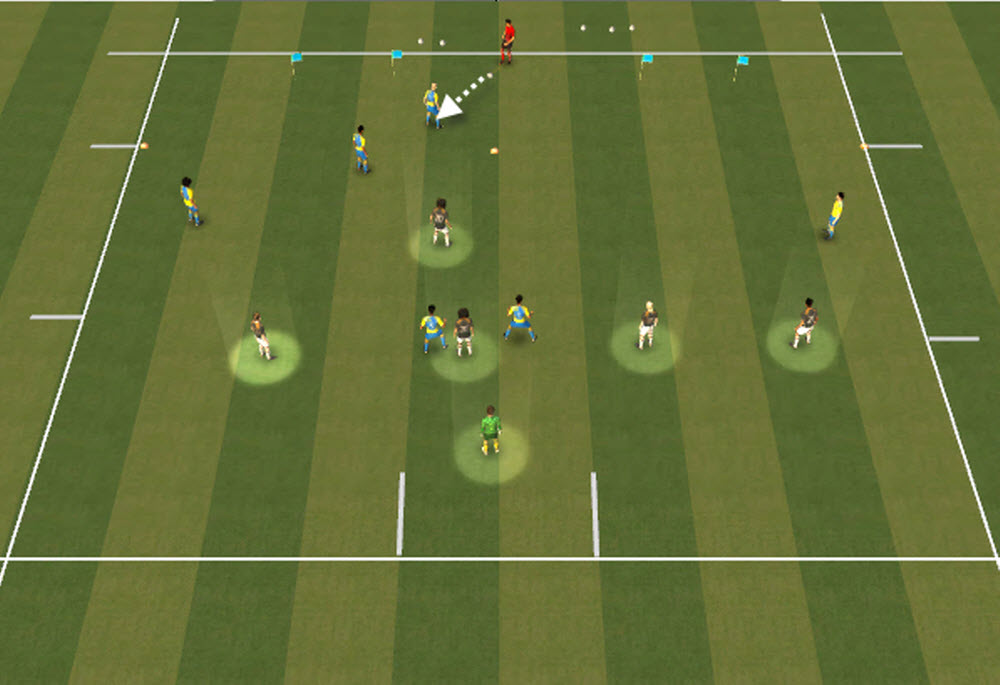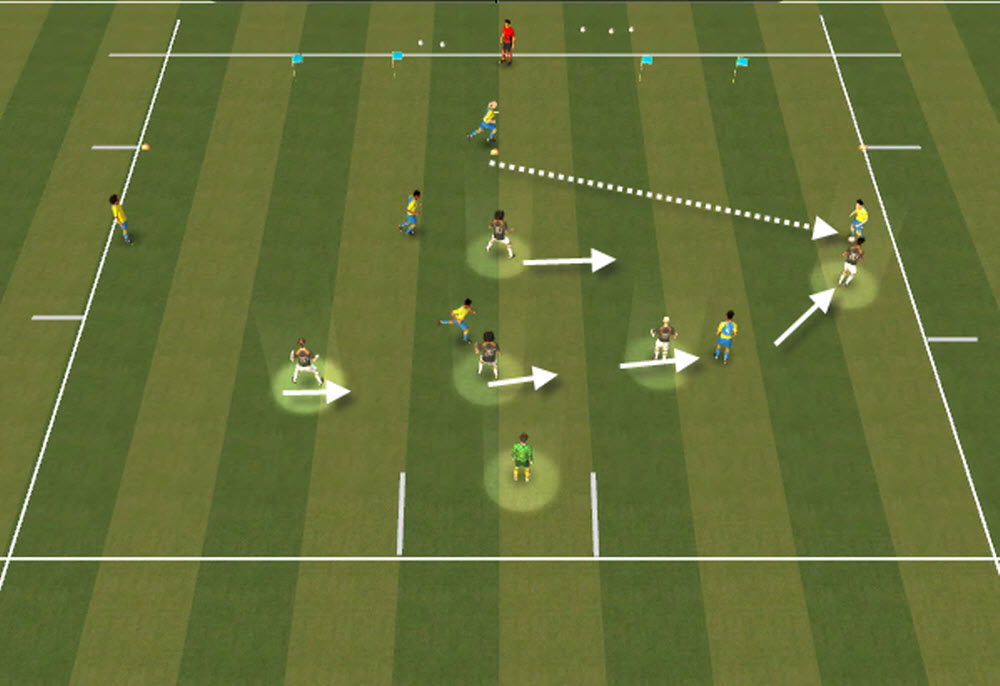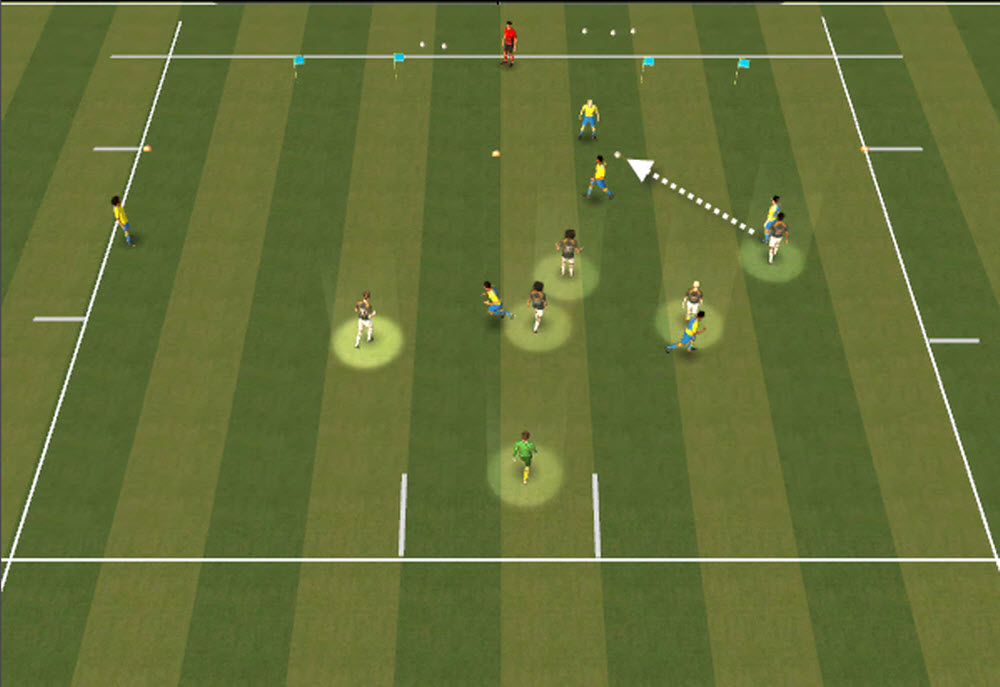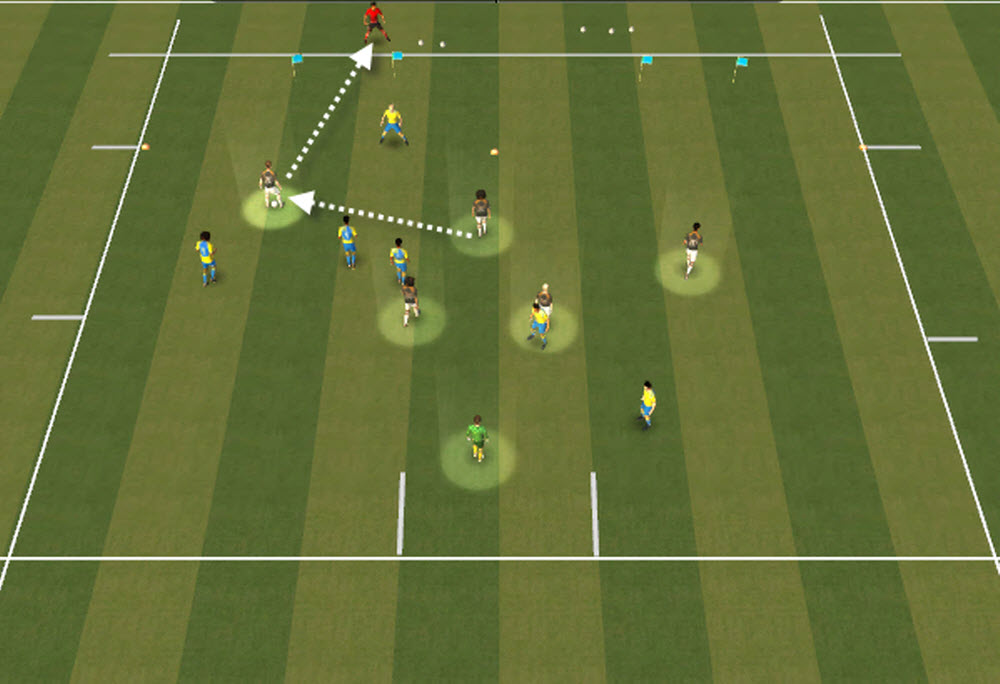27 Jul 2016
UEFA defending – Improve defensive compactness
UEFA Defending – Improve defensive compactness . This is the first in a number of functional sessions on defending. In this session, we are looking at how the defensive unit in a functional game, get organised, work together as unit and keep their compactness and defensive shape.
The nature of the UEFA Defending functional game means that there will be lots of attack v defence situations created, which will give the defending team lots of opportunities to work on, practice and improve their defensive compactness.
Organisation
- Suggested pitch size is full width to 10 – 20 yards over the halfway line
- Full sized goal with GK
- Play a suggested defensive team of 2 centre halves, 2 fullbacks and a holding M/F players against an attacking team of 2 central forwards, 2 wide players and an attacking midfield player – Attack v Defence 5 v 5. This can be scaled up to two attacking midfield players v two defending midfield players, then progressed to two attacking fullbacks joining in and two defending wide players.
- There is also a conditioned attacking support player, who joins in the attacks, but can only support behind the ball and can’t shoot.
- Target / server player, with a supply of footballs
- 2 x target goals for the defence to break out and try and score in
Structure
- Ball is served from the target / server player to the conditioned attacking support player, who then looks to pass forward to one of the attacking team.
- Attacking team try and score, defending team try and stop them.
- Attacking team can always pass back to the conditioned attacking support player, who can only support behind the ball.
- If the ball goes out of play – attack is started from where the ball went out or from the target / server player to the conditioned attacking support player, who then looks to pass forward to one of the attacking team.
- If defending team win the ball, they can score by passing the ball through either of the target goals to the target player.
- Normal football rules apply. Offsides. Throw ins. Free kicks
Key Coaching
- Defensive team to adopt and keep a compact, central and organised shape
- Defensive players to take positions in relation to where the ball and the goal is
- As the ball moves, the defensive unit move together, like they are linked together by a piece of elastic – including the GK
- Central midfield player takes positions between the ball and their central defenders to shield the central ball into forwards feet
- Good communication between defensive players
- If the ball goes wide, the nearest fullback presses the ball and the rest of the defensive unit slide over and keep their compactness.
- If a centre half presses or challenges for the ball, the other centre half and fullbacks, drop and cover
- If the ball goes sideways or backwards from the attacking team ,the defensive unit compact play forward as the ball travels and hold and drop if there is a chance the ball could be passed forward
- Be careful the team do not over compact and end up too narrow.
- If at any time the defending team can win or intercept the ball safely, then they should do so and look to counter attack
Progressions and challenges
- If the defenders win the ball, they can score by passing through the target goals to the target player.
- The target player immediately passes the ball back to the to the conditioned attacking support player, who then looks to pass forward to one of the attacking team.
- Play attack v defence for agreed period of time, keep scores of goals scored by both teams.
- Rotate teams so that all players have the opportunity to attack and defend
- Bring in a second goal and play a game



